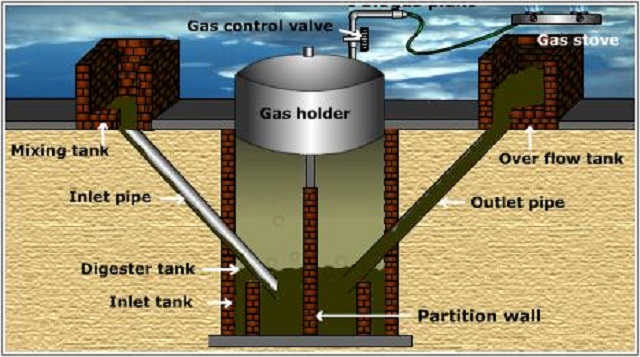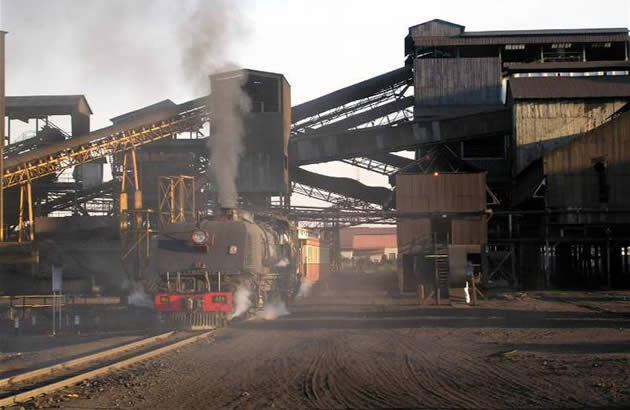Biogas plausible energy source for rural homes

Lungelo Ndhlovu
CLIMATE change mitigation, adaptation and poverty reduction is a core objective of almost every African country’s development agenda.
The countries have realised that for communities to mitigate the effects of climate change, adapt and reduce poverty, they should have adequate energy supplies.
Therefore, access to reliable energy sources is vital for the improvement of livelihoods especially in rural areas where many communities are living in extreme poverty and rely on firewood for heating and cooking.
Reliable energy alone is not sufficient to eradicate extreme poverty but is vital for economic growth.
The energy shortage challenges facing Zimbabwe are urgent and daunting and require alternative sources of renewable energy such as biogas and solar.
If properly exploited, renewable energy sources can make a significant contribution to the country’s energy supply situation and at the same time reducing the cutting down of trees for fire wood.
Biogas is a mixture of gases, primarily methane and carbon dioxide produced by the biological break down or fermentation of organic matter in the absence of oxygen, scientifically referred to as anaerobic digestion.
“The gases can combust or be oxidised with oxygen in the air, resulting in the release of energy which can be used as fuel. Biogas production by the process of anaerobic digestion is popular for treating biodegradable waste because valuable fuel can be produced while destroying disease-causing germs and reducing the volume of disposable waste products,” said Mr Martin Nkomo, a biogas digester expert.
He said biogas is composed of methane gas ranging from 50 to 80 percent; carbon dioxide in a range of 25 to 50 percent, nitrogen in the quantity between zero and 10 percent, hydrogen zero to one percent; hydrogen sulphide zero to three percent and oxygen zero to two percent.
The common technology of biogas production in Zimbabwe is the digestion of feedstock in specially designed digesters.
“Digesters must be strong enough to withstand the buildup of pressure and must provide anaerobic conditions for the bacteria inside. Temperature plays an important role in the digestion process with temperatures of at least 20 degrees Celsius needed to promote bacteria activity.
“Higher temperatures shorten the processing time and reduce the required volume of the digester tank by 25 to 40 percent. Digestion time ranges from weeks to months depending on feedstock and digester type as well as on the digestion temperature,” said Mr Nkomo.
The focus for bio-digesters in Zimbabwe is primarily on low cost systems that are easy to manage and simple to maintain, requiring no active heating system or mobile mixing mechanism. They can be designed to suit the size of a project from household level through to small and large scale producers.
Human, animal and organic waste is fed into the bio-digester in an underground tank or other suitable holding vessel. Micro-organisms breakdown the waste which releases a mixture of gases primarily methane.
The gas rises and collects in a domed ceiling or tube where it builds up pressure. A valve and a hose attached to the top of the tank pipes the gas directly into the house where it is connected to a gas stove.
When the tank reaches capacity, excess effluent is pushed out by natural pressure through a flow pipe and into a holding bin where organic garden waste, like leaves, grass can be added to create high quality fertiliser. In agriculture and small-scale livestock farming, waste can be used and transformed into natural fertiliser and fuel.
Environment Africa, a regional non-governmental organisation, is actively involved in promoting alternative energy solutions while empowering communities in Mashonaland Central province.
After a pilot project set up by the organisation in Guruve in 2014 where three biogas plants and six household solar systems were put up, quite a number of biogas digesters have sprouted around in different parts of the country where communities have adopted the development programme.
One of the beneficiaries of the bio-digester, Mrs Anne Nyanhete said: “I’m happy that we now have energy for cooking and lighting. It’s a resource that never runs out as long as we have cow dung.”
The cow dung from six cattle is sufficient to feed the homestead digester.
“The process of feeding cow-dung into the digester is not labour intensive and anyone can do it. We feed a 20-litre bucket of cow dung slurry (dung mixed with water) into the digester daily and this produces enough gas for our energy need for the day. The gas provides instant heat and it takes less time to cook. Now we can prepare breakfast for the children before they go to school in a short space of time compared to when we were using firewood,” said Mrs Nyanhete.
Biogas has also been adopted by institutions to address their energy challenges.
“Cooking with biogas is very quick. Within 30 minutes, I can boil water and prepare tea for more than 50 people. Biogas has made life easy for us here by reducing our electricity bill as we also use it for lighting purposes,” said Miss Irene Moyo, a cook at a vocational centre in Matabeleland South province.
Through the National Domestic Biogas Programme in Zimbabwe, in partnership with HIVOS, Ministry of Energy and Power Development, Ministry of Agriculture, Mechanisation and Irrigation Development and Renewable Energy Fund, SNV promotes biogas to provide access to clean energy for cooking, lighting and other uses.
The programme is active in Insiza, Chegutu, Goromonzi and Mvuma. The aim of the project is to improve lives, increase incomes of rural households and contribute to sustainable waste management and nutrient recycling.
The Zimbabwe Domestic Biogas Programme started in January 2013 using a market-based approach and the flagship national programme has inspired the uptake of biogas digesters across Zimbabwe.
More than 70 biogas masons and 18 fabricators have been trained to take up the installation of biogas plants.
The programme has improved the lives of 1 385 rural households. New appliances such as refrigerators, rice cookers, geysers and heaters have since been added and are still being tested so they can operate on biogas. These developments will transform lives and help ease the pressure of domestic work on women and girls in particular.











Comments